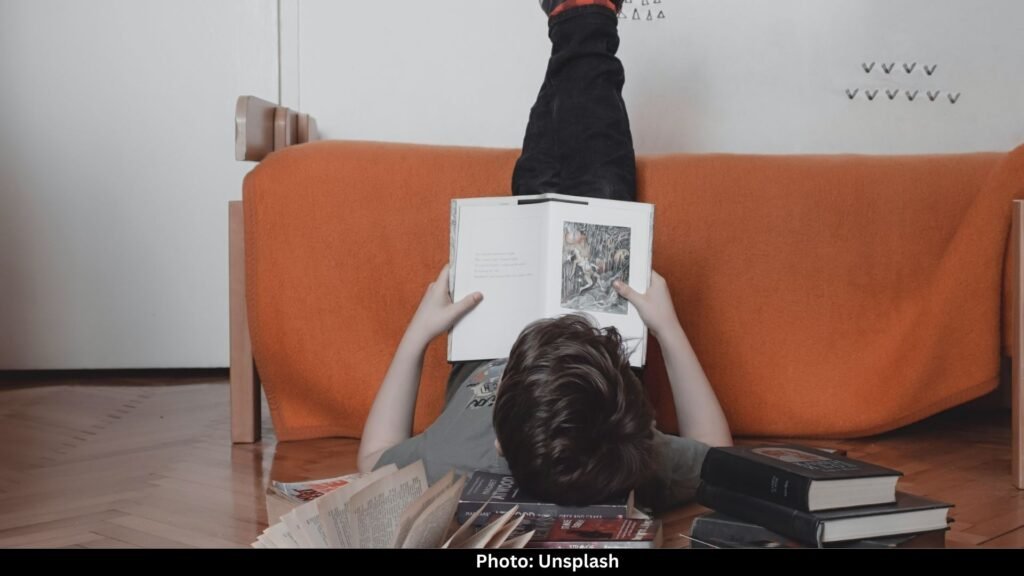Walk into a living room and notice what happens. The sofa is inviting, the armchair looks comfortable, yet somehow, someone ends up sitting on the floor. Why? Here’s the thing: humans have an instinctive connection to the ground. Long before couches or chairs existed, people sat, squatted, and stretched out on the earth. That instinct is still alive. The floor offers a grounding feeling that cushions and armrests can’t match. There’s something quiet and satisfying about feeling solid support beneath your legs.
The pull is subtle but real. The floor connects us to our environment, to our own bodies, in ways furniture rarely can.
Childhood Memories That Stick
Think about your earliest memories. Meals on mats, reading on the carpet, sprawling across the living room to play games. Those moments leave a mark. Even as adults, we return to the floor without thinking because it reminds us of a simpler, freer time.
The floor carries familiarity and safety. Sitting cross-legged, stretching out, leaning on elbows, all of it echoes the routines of childhood. What this really means is that the floor isn’t just a surface; it’s memory. Every time we choose it over a sofa, we’re revisiting patterns that formed long before adulthood demanded posture and formality.
Freedom of Movement
Sofas are restrictive. You can lean back, cross a leg, maybe adjust slightly, and that’s it. The floor doesn’t care. You can sprawl, curl, stretch sideways, or twist however you like. It adapts to your body rather than forcing your body to adapt.
That flexibility is freeing. On the floor, you can change positions constantly, lie down mid-conversation, or lean on a pillow wherever it feels right. It’s informal, unrestricted, and entirely yours.
Subtle Comfort of Support
Most people don’t notice this, but the floor supports your body evenly. Cushions compress unevenly, creating pressure on certain muscles or joints. Tiles, wood, or carpet spread weight naturally. Sitting on the floor also engages muscles that chairs leave idle. Cross-legged or kneeling, your core is subtly active. Over time, this quiet engagement becomes something your body craves.
Mindfulness Without Effort
Sitting on the floor slows you down in a way that chairs never do. You become aware of your posture, the texture beneath you, the weight of your body. You don’t have to try to be present, it happens naturally.
Sofas often encourage distraction. Lean back too comfortably and your phone comes out, or your mind drifts. On the floor, your body’s awareness anchors your attention. That small difference changes how you experience a room, a conversation, or even a quiet moment alone.
Cultural Roots That Persist
Floor-sitting isn’t just instinct, it’s tradition. In Japan, tatami mats and low tables make floor seating central to daily life. In India, cross-legged sitting is normal during meals, conversations, and rituals. Middle Eastern households use rugs and cushions to gather friends and family close to the ground.
These traditions emphasize equality, intimacy, and grounding. Even in modern spaces dominated by furniture, the instinct survives. Picnic blankets, casual rug seating, and floor yoga echo centuries-old practices that remind us why being close to the ground feels right.
Social Dynamics on the Floor
Sitting on the floor changes the way we interact. People form circles, eyes level with each other, and hierarchies fade. Laughter comes easier, conversations feel intimate, and shared activities become more engaging.
There’s no separation of cushions or armrests. The floor encourages proximity and connection. It’s subtle, but it shapes interactions in ways sofas rarely can.
Practical Pleasures Forgotten
The floor allows more than nostalgia or instinct. Stretching your legs fully, reaching for books or snacks, or curling up with a pet is simpler on the ground. Floors are forgiving. You can spread pillows, roll out mats, or adjust your position in ways that furniture doesn’t allow. Tiles offer cool relief in summer, rugs warmth in winter. Sofas rarely provide that adaptability.
Even small tactile pleasures matter. Carpet fibers brushing fingertips, the smooth coolness of a tile under bare feet, these sensations quietly draw us to the floor.
The Psychology of Choice
Sitting on the floor feels deliberate. Choosing a sofa is passive. Choosing the floor is a conscious decision. You decide how far to stretch, which cushion to claim, or how to arrange your body in the space. That agency feels satisfying.
What this really means is that floor-sitting satisfies both body and mind. Physically, it’s grounding and flexible. Mentally, it feels voluntary, playful, and comforting. It’s comfort without rules, presence without effort.
Health and Mobility Benefits
There’s a practical advantage too. Floor-sitting keeps joints flexible, hips, knees, and ankles benefit. Squatting, kneeling, or sitting cross-legged strengthens muscles and prevents stiffness that sofas promote. Even short periods on the floor maintain mobility and posture.
Over time, these small movements add up. That’s why yoga practitioners and martial artists often prefer floor seating. It keeps the body naturally agile rather than letting it stagnate in one static position.
Nostalgia, Play, and Joy
The floor evokes playfulness. Board games, puzzles, reading, casual chats, they all feel more natural on the ground. There’s informality, freedom, and a sense of safety. Nostalgia deepens the effect. Floor games, sleepovers, and meals remind us of childhood, of lazy afternoons, of simpler days.
For adults, it’s still joyful. Sitting on the floor reconnects us to play, intimacy, and presence. The floor encourages imagination and awareness in ways furniture rarely does.
Why We Keep Coming Back
So why do we keep choosing the floor, even when sofas are available? Because it’s instinctive, cultural, nostalgic, flexible, mindful, socially egalitarian, and playful. The floor is simple, honest, and adaptive. It grounds us physically and emotionally, reconnecting us to ourselves, others, and the space we inhabit.
Sofas are convenient, but the floor offers something subtle and irreplaceable. Time and again, we find rugs, mats, and bare floors claiming our attention over cushioned furniture. It’s not about rejecting comfort; it’s about embracing a deeper kind of ease that furniture cannot provide.
Read More: How Our Shoes Tell Stories About Our Journeys Without Us Realizing It




